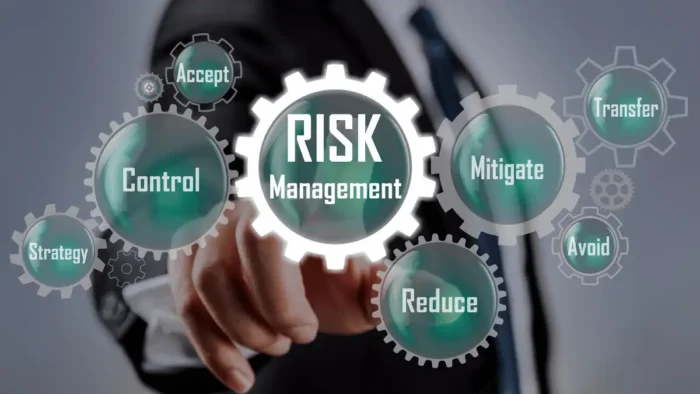With risk management as a major component of workplace success, it can be hard to know where to start. After all, dealing with potential risks involves much more than determining who’s responsible for what and writing up legal documents. It’s about understanding the relationship between the people and processes going on within any given business environment – from healthcare initiatives to financial planning.
Let’s look at how organizations manage their risk exposure so employers and employees alike can work together harmoniously while keeping dangerous incidents from occurring in the first place! Let’s dive in.
Understanding Risk Management
Risk management is a crucial function in any workplace. It involves identifying, assessing, and controlling potential risks that could harm individuals or property. A widely recognized qualification in this field is the NEBOSH National General Certificate. In general, the NEBOSH National General Certificate consists of two units: “Unit NG1: Management of Health and Safety” and “Unit NG2: Risk Assessment.”
Through this program, individuals gain an in-depth understanding of the principles and practices of risk management and the legal framework that governs it. Consequently, they’ll be better equipped to identify hazards, evaluate risks, and implement measures to ensure the safety of everyone in the workplace. NEBOSH graduates are highly sought-after by employers because they can help organizations comply with occupational health and safety regulations, minimize accident rates, and improve the overall performance of the workplace.
Identifying Hazards
Identifying hazards is the first step in mitigating risks in the workplace. This process involves recognizing potential sources of harm, which could range from physical hazards like machinery and chemical substances to ergonomic risks like poor posture and even psychosocial threats such as high-stress environments.
Typically, hazard identification involves a mix of methods, including workplace inspections, consultation with employees, and incident investigations. By identifying these hazards, organizations can then prioritize them based on severity and likelihood and develop strategies to eliminate or control these risks, thus promoting a safer work environment.
Related: Real-life Organizational Decision-Making Examples
Creating Systematic Strategies
Once hazards are identified and prioritized, organizations must create systematic management strategies. It usually involves developing specific procedures and controls to mitigate the risks. Controls may include:
- Using appropriate protective equipment
- Enforcing strict disciplinary procedures for misconduct
- Developing safety policies and training material
- Establishing warning systems to alert employees of potential hazards
- Performing regular maintenance checks on machinery and equipment
Organizations can reduce the likelihood of workplace accidents or injuries, ensure compliance with legal requirements, and ultimately help their employees succeed in a safer environment.
Reducing Negative Outcomes
As important as it is to prevent negative outcomes, it is equally crucial to have a plan in place for reducing the impact of any incidents that do occur, including:
- Developing a crisis communication plan to communicate with stakeholders, such as employees and the media
- Establishing an incident response team responsible for responding quickly and effectively to incidents
- Investigating any incident thoroughly to identify root causes and take corrective action
- Implementing measures to protect against similar incidents in the future
- Conducting regular reviews of existing risk management strategies to ensure they are up-to-date
Once these measures are implemented, organizations can minimize the damage from any incidents and ensure their workplace remains safe and productive.

Improving Communication and Developing a Culture of Safety
Organizations must focus on improving communication with employees and developing a safety culture. This means emphasizing safety in every aspect of the workplace, from induction to training programs. Additionally, employers should ensure that all risk assessments and procedures are communicated effectively to employees so they understand their roles and responsibilities in mitigating risks.
When you create an environment of safety and accountability, organizations can now foster a culture of trust and respect between employers and employees. Clear and concise communication allows for a productive and harmonious work environment, making it essential for employers to pay keen attention to their communication strategies.
Assessing Risks Over Time
As our world evolves, our risks must be regularly assessed to ensure that our systems and procedures remain effective. Whether it’s a new technological advance or a change in societal norms, it’s important to stay ahead of potential dangers and adjust our strategies accordingly.
Regularly reviewing our risk management protocols can help us identify areas that need improvement and allow us to make changes to increase the safety and security of those we work with and serve. By taking proactive steps to assess risks over time, we can rest assured that we’re doing everything possible to mitigate potential issues and safeguard the people and resources under our care.
The Role of Leadership in Risk Management
Leadership plays a pivotal role in effective risk management within an organization. Strong leaders set the tone for safety culture and lead by example, demonstrating the importance of adhering to safety protocols and procedures. They are responsible for communicating safety expectations clearly and regularly, ensuring that each employee understands their role in maintaining a safe working environment.
Leaders are instrumental in implementing and maintaining risk management strategies, identifying areas for improvement, and addressing any issues that may arise. Ultimately, the effectiveness of a risk management strategy is mainly dependent on the commitment and involvement of leadership at all levels of the organization.
Employee Participation and the Culture of Safety
When employees identify hazards, create strategies, and implement safety protocols, they are more likely to take ownership of their safety and that of their colleagues. This active engagement creates a safer environment and a sense of unity and cooperation among staff.
Regular safety training sessions, workshops, and open discussions can also give employees the necessary knowledge and skills to contribute effectively to the organization’s risk management initiatives.
Conclusion
Managing workplace risks is an ongoing process requiring the collective effort of the entire organization. It necessitates effective communication, leadership involvement, employee participation, and a strong safety culture. Organizations can create a safe and productive working environment by identifying hazards, implementing systematic strategies, mitigating adverse outcomes, and continuously reassessing risks. The ultimate goal is to foster a culture where safety becomes second nature, demonstrating the organization’s commitment to protecting its greatest asset: its people.





